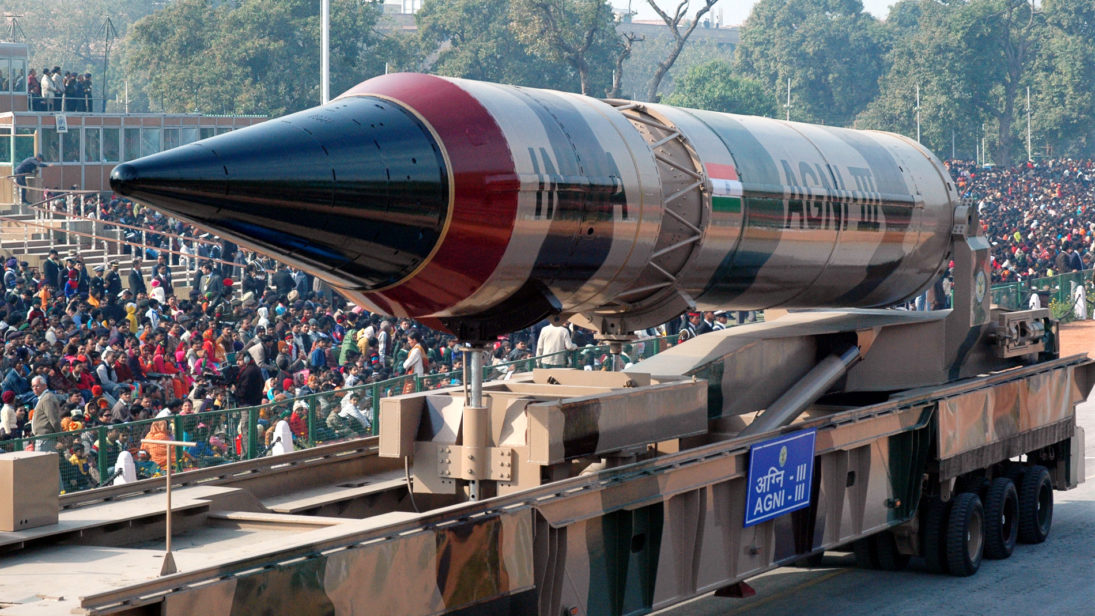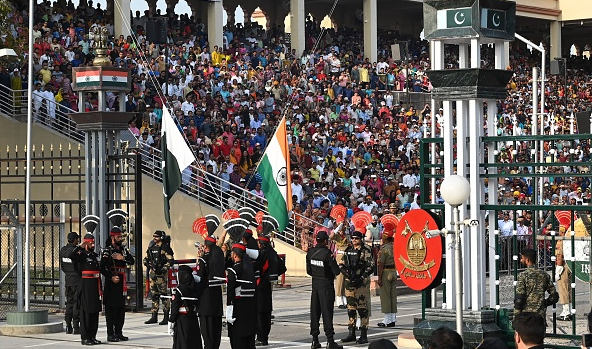
In 2017, Yasir Hussain assessed opportunities to implement new bilateral confidence building measures (CBMs) to reduce nuclear risk between India and Pakistan. His words, republished below, remain timely in the context of continuing development of nuclear capabilities in South Asia in 2019.
South Asia’s hostile neighbors, India and Pakistan, are locked in a nuclear arms race that has grown worse over the last several years. Apart from a few exceptions, there is little emphasis on identifying new ideas and confidence building measures (CBMs) to reduce the role of nuclear weapons in this conflict. As a starting point to overcoming the current deadlock, Pakistan and India should endeavor to take some symbolic steps to ease bilateral relations without compromising their respective military capabilities. This could primarily be achieved by making moderate adjustments to existing bilateral CBMs. Easing bilateral tensions by addressing mutual distrust can create a pragmatic environment conducive to deescalating the nuclear arms race in South Asia.
Nuclear Tensions: Product of Poor Bilateral Ties and Disinterest
The need for CBMs in India-Pakistan relations has grown increasingly dire due to the expansion of each countries’ nuclear programs, poor bilateral relations, and the disinterest of major powers in intervening in crisis situations. Since India and Pakistan proved their nuclear weapons capability in 1998, both countries have been expanding and modernizing their respective arsenals and missile delivery systems to meet their professed security needs. Indeed, both states have been said to possess the fastest growing nuclear programs in the world. As such, the potential for nuclear brinkmanship in South Asia remains a huge concern with the Kashmir dispute serving as the nuclear flashpoint.
Over their independent histories, CBMs between India and Pakistan have largely been a reflection of the state of bilateral relations. The 1988 Nuclear Facility Non-Attack agreement and the 2007 bilateral agreement on reducing the risk of nuclear accidents are two such cases of positive cooperation during periods of relative stability in bilateral relations. Since 2007, however, there has been little progress towards identifying and advancing new CBMs. This trust deficit is due to a number of political and historical factors, in which leadership in both countries have nurtured an environment of mistrust that has made comprehensive dialogue nearly impossible.
Third, the refusal of world powers and various multilateral organizations to mediate between India and Pakistan on critical issues has also further intensified antagonism in the bilateral relationship. This includes issues beyond Kashmir, which India has consistently claimed is off the table for international involvement, such as the Sir Creek and Siachen disputes. Robust, international involvement on these smaller disputes could pave the way for broader cooperation, but thus far their involvement is largely stagnant.

Refusing to Pick the Low Hanging Fruit
While the bilateral conditions supporting CBMs may be anemic at the moment, there is a general understanding in both countries that CBMs would contribute to a more stable South Asia. Yet, evolving geopolitical dynamics also threaten to undermine any progress towards CBMs in the future. For example, the strategic anxieties that propel India’s nuclear weapons program are not solely limited to Pakistan. China’s maritime activities in the Indian Ocean region and robust economic engagement in India’s neighborhood through the Belt and Road initiative have increased Indian fears of strategic encirclement. For its part, Pakistan is equally suspicious about growing strategic ties between India and United States and has consequently deepened its ties with China.
These shifting geopolitical alignments have implications for both India and Pakistan’s willingness to engage in CBMs. For example, the United States’ perceived containment policy of China by partnering with India would appear to shift the regional equilibrium in favor of India. Likewise, Pakistan’s close ties to Beijing is a major strategic concern to India that may close minds to India-Pakistan cooperation.
Already there is some evidence that the spirit of existing CBMs, like the 2012 agreement on pre-notification of ballistic missile tests, is being ignored. In November 2017, Pakistan objected when India failed to notify Pakistan of the test launch of India’s Nirbhay nuclear-capable cruise missile. While the pre-notification agreement only applies to ballistic missiles, extending the agreement to incorporate cruise missile tests would be an achievable and important step in advancing CBMs, as Frank O’Donnell of the U.S. Naval War College recently suggested in a Stimson Center Off Ramps proposal.
In another foiled CBM attempt in 2016, Pakistan proposed that India and Pakistan sign a bilateral agreement to simultaneously adhere to the Comprehensive Test Ban Treaty (CTBT), which would end nuclear weapons testing in both countries. India rejected this proposal, stating that disarmament objectives “do not have regional solutions,” though one Indian commentator did support India’s unilateral ratification of the CTBT. However, Pakistan’s offer is worthy of reconsideration. Such a bilateral commitment will not just improve South Asia’s nuclear stability but also aid India and Pakistan in considering more comprehensive CBMs.
There is a larger perception in Pakistan that India’s reluctance to accept a binding treaty like the CTBT is due to its intention to demonstrate its nuclear weapon capability in the future. While India says it is committed to its unilateral moratorium on nuclear weapons testing, this has been little comfort to Pakistani strategic thinkers since India can revoke its decision at any time. As such, India’s refusal to consider these CBMs contributes to instability in the region.
Conclusion
Since the 1999 Kargil war, South Asia has fortunately not experienced a volatile nuclear crisis in 20 years. Given the present bitterness of bilateral relations and shifting geopolitical realities regarding China and the United States, the need for CBMs and institutionalized mechanisms to deescalate crises should be a top national security priority in both countries. While there are no immediate answers as to how to improve conditions to foster improved and new CBMs, the responsibility rests in the hands of policymakers, and their populations, to develop and support comprehensive mechanisms that stabilize South Asian deterrence.
***
Image 1: Public.Resource.Org via Flickr
Image 2: Aamir Qureshi via Getty


